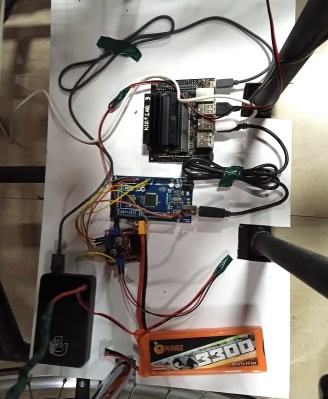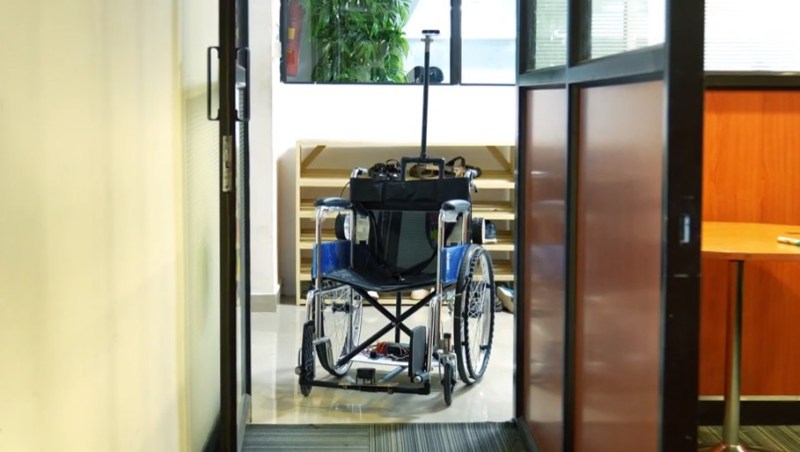Compared to their manual counterparts, electric wheelchairs are far less demanding to operate, as the user doesn’t need to have upper body strength normally required to turn the wheels. But even a motorized wheelchair needs some kind of input from the user to control it, which still may pose a considerable challenge depending on the individual’s specific abilities.
Hoping to improve on the situation, [Kabilan KB] has developed a self-driving electric wheelchair that can navigate around obstacles by feeding the output of an Intel RealSense Depth Camera and LiDAR module into a Jetson Nano Developer Kit running OpenCV. To control the actual motors, the Jetson is connected to an Arduino which in turn is wired into a common L298N motor driver board.
 As [Kabilan] explains on the NVIDIA Blog, he specifically chose off-the-shelf components and the most affordable electric wheelchair he could find to bring the total cost of the project as low as possible. An undergraduate from the Karunya Institute of Technology and Sciences in Coimbatore, India, he notes that this sort of assistive technology is usually only available to more affluent patients. With his cost-saving measures, he hopes to address that imbalance.
As [Kabilan] explains on the NVIDIA Blog, he specifically chose off-the-shelf components and the most affordable electric wheelchair he could find to bring the total cost of the project as low as possible. An undergraduate from the Karunya Institute of Technology and Sciences in Coimbatore, India, he notes that this sort of assistive technology is usually only available to more affluent patients. With his cost-saving measures, he hopes to address that imbalance.
While automatic obstacle avoidance would already be a big help for many users, [Kabilan] imagines improved software taking things a step further. For example, a user could simply press a button to indicate which room of the house they want to move to, and the chair could drive itself there automatically. With increasingly powerful single-board computers and the state of open source self-driving technology steadily improving, it’s not hard to imagine a future where this kind of technology is commonplace.

















It’s a neat idea, but I’m pretty sure most people would prefer a control mechanism that lets them move themselves around without having a machine possibly screw it up.
That was unnecessary.
“That was unnecessary.”
Utterly. Though perhaps he needs to rebuke at least one person a day to feel self-worth and then it becomes necessary.
I can imagine that some wheelchair users might find a semi-autonomous system rather useful.
For example I know of one Parkinson’s patient who struggled terribly with a joystick-operated powered chair and eventually gave up on it, preferring to ask their carer to push the chair when they needed to move.
Perhaps a voice-commanded semi-autonomous chair that could “Take me to my desk” or “take me to the bathroom” would enhance the independence of some chair users (and remove a burden from their carers).
Amazon Echo already does this for the lights, it’s not perfect but it helps.
I think it’s a brilliant idea.
Speaking of lacking upper body strength, the L298 driver chips mentioned above, are only rated for 2Amps. I think that you are going to need a stouter motor driver board to move a wheelchair with a person in it.
This is only prototype working model will update to high power motorized wheelchair
Excellent, good luck on your project!
as long as it isnt a tesla model